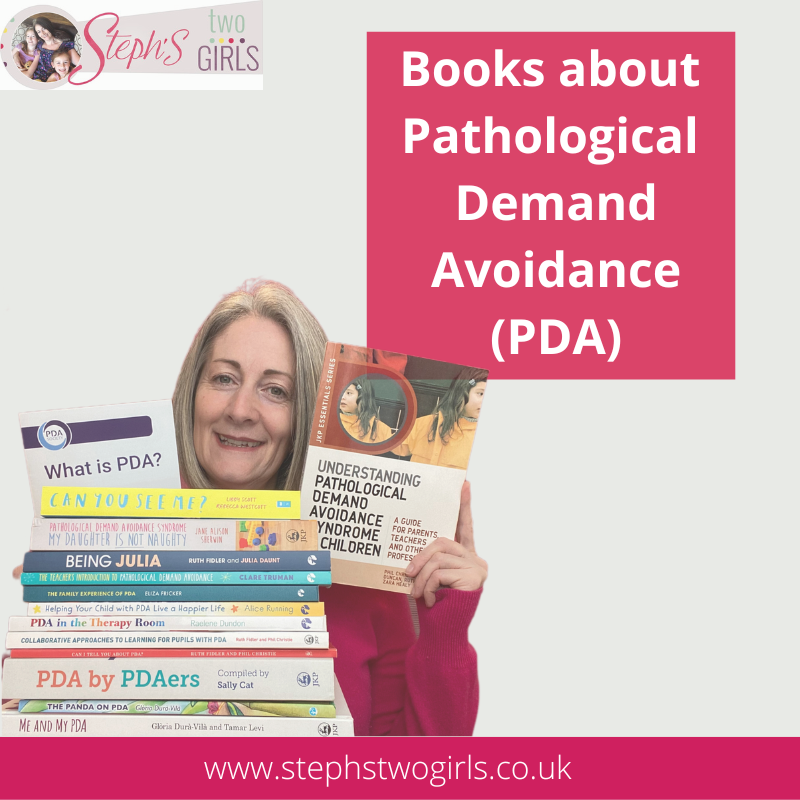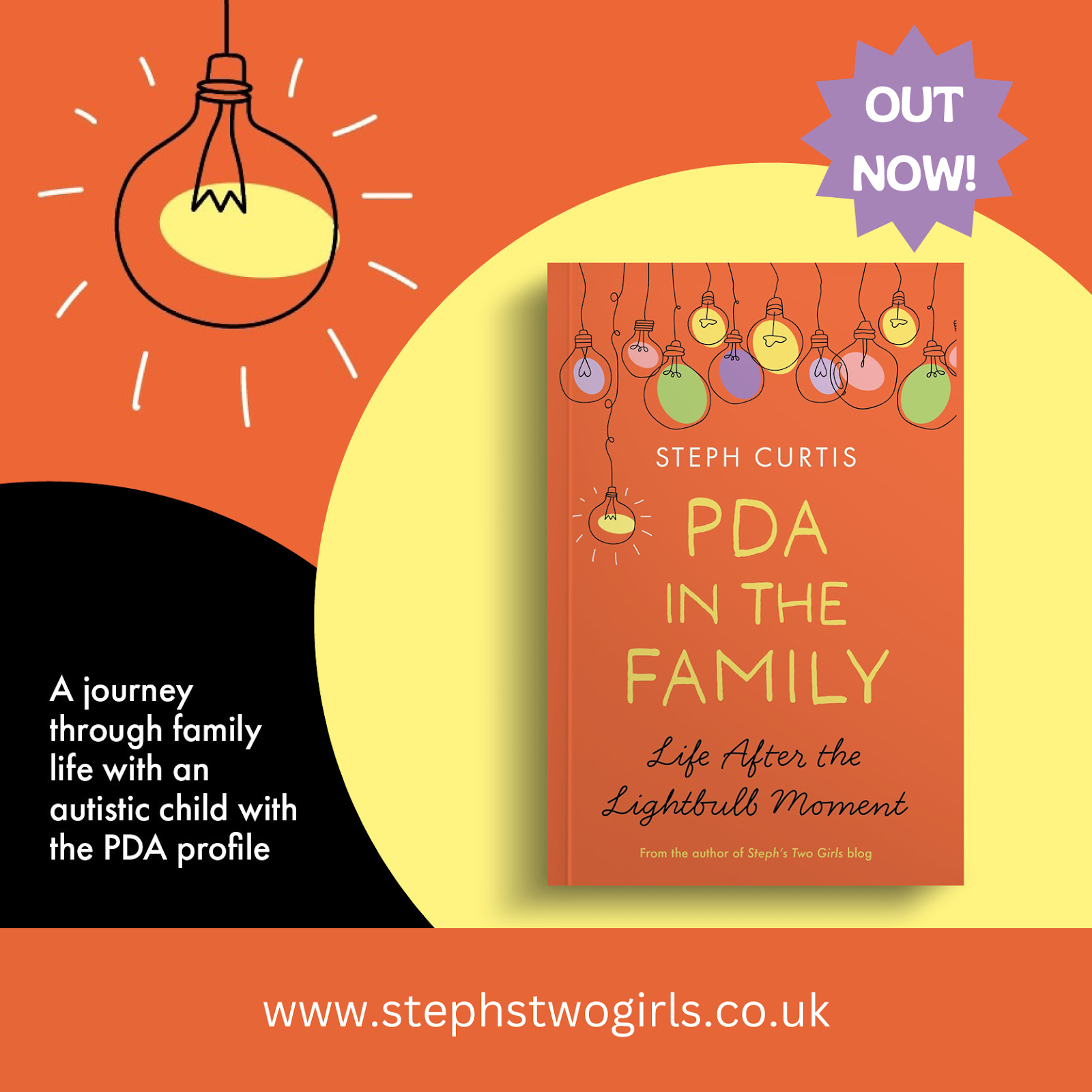The Declarative Language Handbook is a best-selling book that I know has helped many families in the PDA community. Written by Linda Murphy, a speech and language pathologist, this book was intended to help therapists, teachers, parents, grandparents and carers learn how to use everyday moments to teach and guide a child's social development. The strapline is 'Using a thoughtful language style to help kids with social learning challenges feel competent, connected and understood'. On her website, Linda says "I want to help parents and professionals, who work with individuals with learning differences, learn how powerful a thoughtful, positive communication style can be. What we say and how we say it matters!"
 |
| (*Underlined text and the pictures in this post are affiliate links; as an Amazon Associate I earn from qualifying purchases but it won't cost you any extra!) |
Although the book was not written (as far as I know) with Pathological Demand Avoidance in mind, it is mentioned frequently within PDA circles. We have known for many years that language choice with our PDAer is key. By that I mean that we always carefully consider and choose the language we use with her, in any and all situations. We learnt very early on (probably even before her autism diagnosis) that we needed to phrase demands in a way to make them seem less like demands and more like requests, and we also learnt that certain language choices could negatively influence her anxiety levels. I have joked several times over the years about how the word 'no' seemed to be one of our younger daughter's favourite words, but only if she was using it herself. We rarely used 'no' in our house, saving it for serious situations that potentially had a safety aspect (such as if she was about to run out into the road without looking. Although I suspect we were more likely to use 'stop!' in that instance). Declarative language is often suggested as a helpful approach for PDAers; I think we gradually switched into using it because we saw the effects at home when we didn't.
How we communicate with all our children has such a big influence on their lives, but I'll be honest, this is not something I gave much thought to before becoming a parent, or even in the first couple of years after our girls were born. None of us are perfect and it is impossible to get it right all the time of course, but a litle bit of knowledge goes a long way when it comes to communication. I wish I'd had this book to read 14 years ago when our daughter was first diagnosed and we were on a very steep learning curve!
What is Declarative Language?
Declarative Language uses a comment, or a statement, or an observation. This is in contrast to the way many parents and teachers would naturally communicate with children, which would be with Imperative Language - giving commands, or requests, or asking direct questions.
If imperative language is used, then a response is usually expected. This means that the control lies with the person giving the command, or asking the question, while the other person/child is expected to give the response. That lack of control can lead to increased anxiety levels and for those who are well versed in PDA, we can see how problemative this can be.
Declarative language, on the other hand, is a less threatening, less forceful, less anxiety-inducing way of communicating. Observing or commenting on the world around you, in order to share information. The idea is that these observations give time for the information to sink in and then be responded to (not necessarily verbally).
The Declarative Language Handbook
This book is divided into seven parts: an Introduction, Getting to know the Good Stuff, Mechanics, Pacing and Troubleshooting, Practice, Tracking Progress and Research, and Final Words.
The introduction offers helpful advice on how best to use the book as well as covering the basics in 'what you need to know the get started right away'. This chapter explains how demands can trigger a fight/flight/freeze response and lead the brain to consider the demand as a threat. Examples are shared of the resulting kind of behaviour which may then be seen. Some imperative language examples are given - the kind of phrases used by many parents at home or teachers at school. Such as 'get in line' or 'say hello to Grandma' or 'what colour is your shirt?'. Alternative declarative examples for these phrases are then suggested, along with the reasoning of why these are better options and likely to elicit a different response to when the imperative language is used. I think this introduction is so clear and helpful, setting the scene for the rest of the book in a simple, concise manner that makes you want to read further.
Demands can make kids feel inadequate. But declarative language empowers them to feel competent, understand the world better, develop self-awareness, and self-advocate.
The next section talks about the importance of non-verbal communication and visual referencing, and how this leads to social learning. Then the author moves on to explaining how using episodic memory is good for problem solving - using past experiences to help with the here and now. It makes sense that using declarative language, explaining situations, can help with recall and finding solutions in the future.
Chapters 5, 6 and 7 bring up three important areas of learning for children and explain how we can help them with this. Appreciating different opinions, making mistakes is okay and thinking in alternatives and possibilities are three chapters packed with examples and practical advice on how to help with your child's independence.
Part 3 is labelled 'mechanics' and is arguably the most important part of the book. There are some great examples of declarative language sentences/statements and a couple of lists of the most helpful words to use. Linda suggests getting into the habit of changing questions into comments. An example of this might be that instead of asking 'why are you upset?', you could say 'I've noticed that you are upset but I don't know why and I'd like to help. I wonder if there's anything I can do?' This part also touches on when it is OK to use imperative language, with safety being the number one reason, as I wrote earlier on in this post.
Part 4 gives more tips and lots of practical examples, along with some extremely helpful practice sets that include a reminder of good words to use when building sentences. I particularly liked the pacing and troubleshooting chapters with their real-life examples.
The Importance of Pacing.
A most important partner to declarative language use is pacing. “Pacing” means slowing down your delivery of information enough for the child to effectively process what you have said and respond. Starting out, this means you deliver one unit of information and then wait. You are waiting so you can observe the child’s cues. You are waiting for them to indicate that they have received the message. Their cues may be verbal or non-verbal."Pacing" means slowing down your delivery of information enough for the child to effectively process what you have said and respond.
The author's website offers more resources including webinars and podcasts where declarative language is discussed: www.declarativelanguage.com
I highly recommend this book for anyone who is living or working with a PDA child. These changes in the way we use language can have such a big impact and help support our children in so many ways. It is not a hefty book, which means it's easy to read and it is one you can dip back into to refresh your memory about the language suggestions.
Available from Amazon here, as either a paperback, audiobook or kindle version: Declarative Language Handbook
Do you know a child that struggles to be flexible? Is it hard for them to express their emotions calmly using language - often getting upset instead? They might also have trouble making friends or telling you what they did during the day. These skills are needed in life! Wouldn't it be great if there was a way that you could support growth in these areas that was woven into everyday interactions and social opportunities?
That is what this book is about. It's to help you, the person who cares deeply about someone with these challenges, use everyday moments to teach and guide your child's social development. You might be a therapist or a teacher,or you might be a parent, grandparent, or babysitter. This book was written to help you feel equipped to make a difference, simply by being mindful of your own communication and speaking style. What you say, and how you say it, matters!
Linda is a speech language pathologist and RDI® Consultant. She co-founded Peer Projects Therapy From the Heart, a clinic in Beverly, MA dedicated to helping kids and families by using a positive, thoughtful communication style that emphasizes understanding, patience, respect, and kindness. Linda has been working with individuals with social learning differences for over 25 years. She leads trainings on the topic of social learning, has authored Declarative Language Handbook, and its partner Co-Regulation Handbook, numerous articles, and co-authored Social Thinking and Me with Michelle Garcia Winner. Linda lives north of Boston with her husband and their two busy lovable boys.






















No comments:
Post a Comment
Comments are always very much appreciated and can really help the conversation go further...